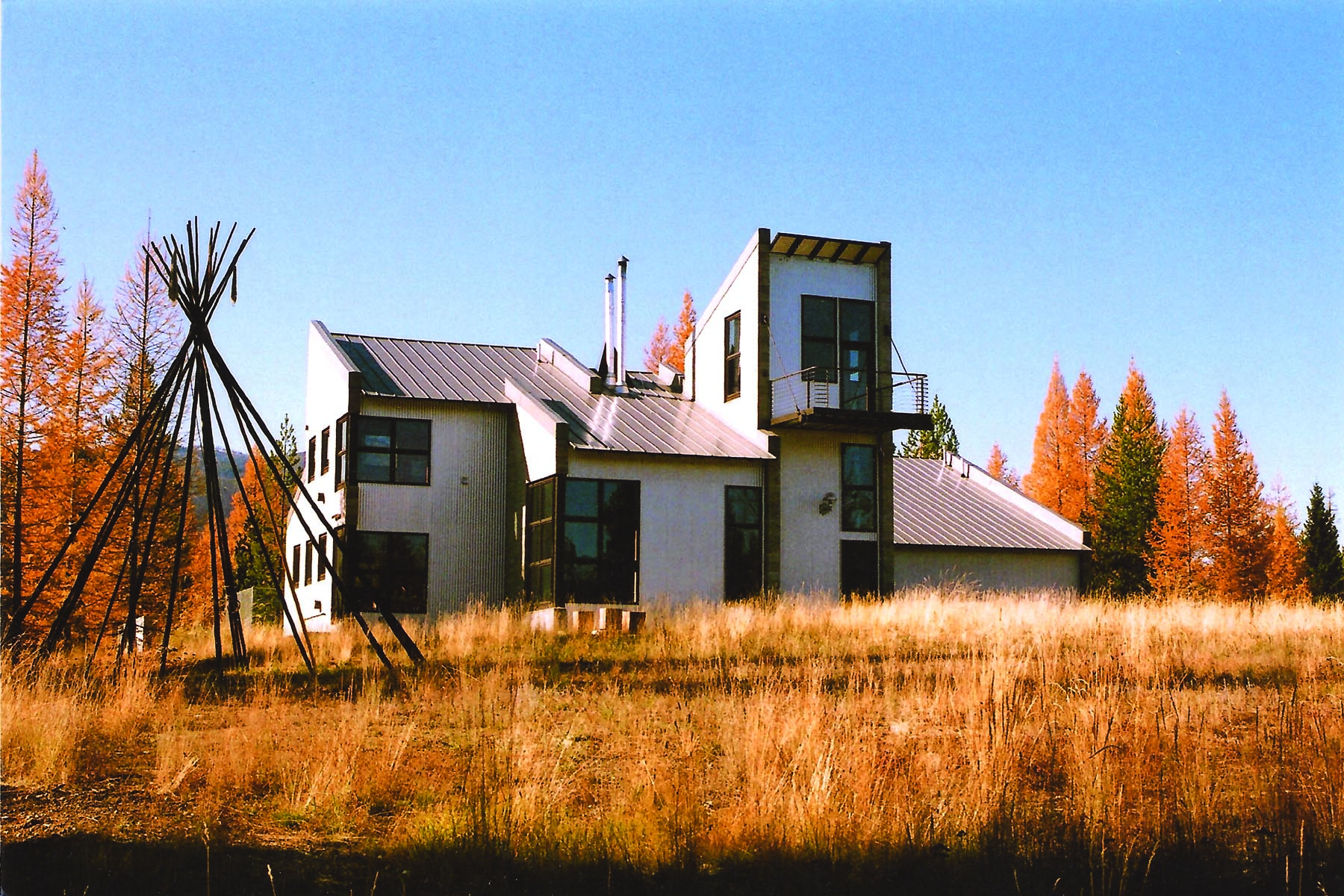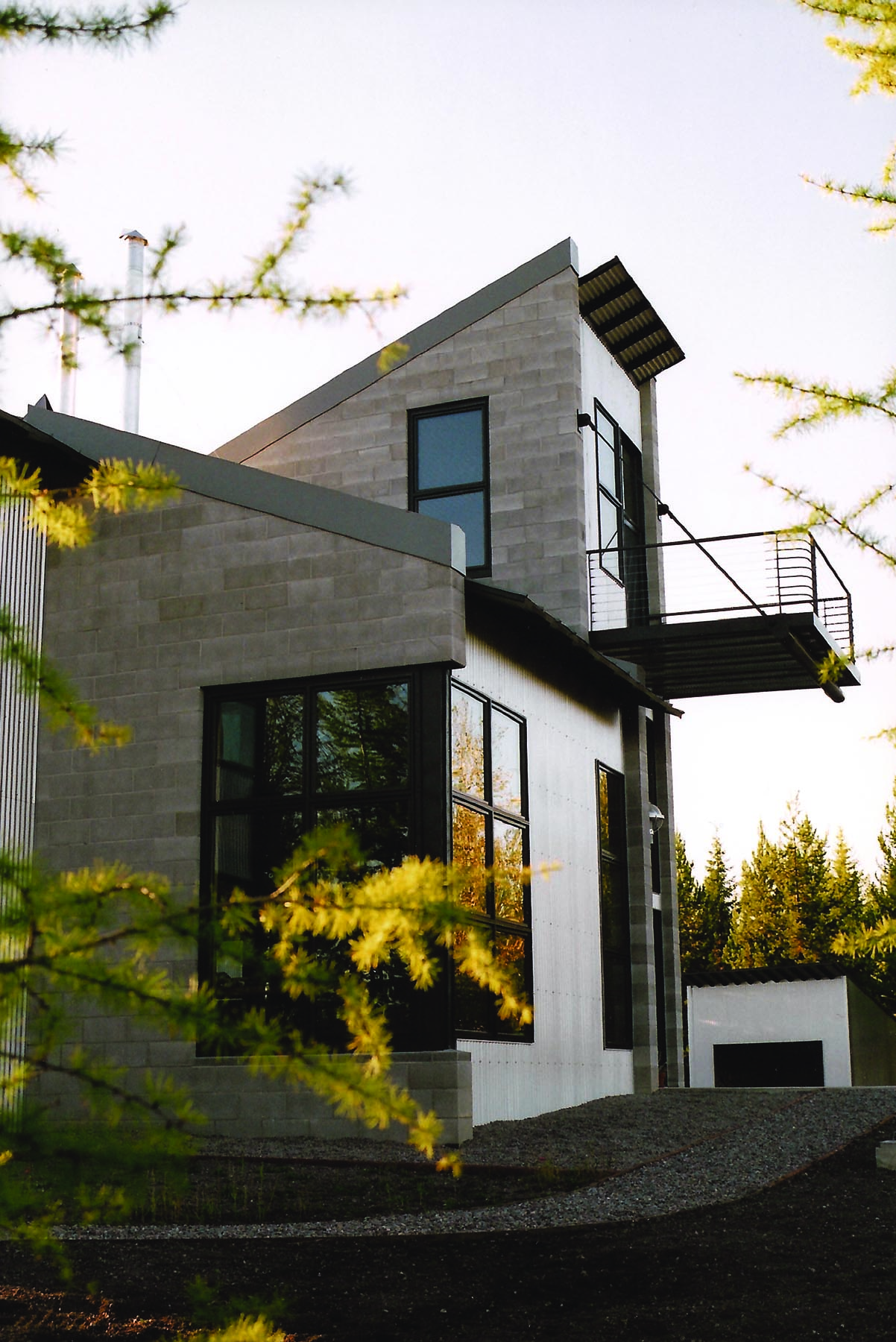
28 Aug Western Focus: Living with Fire
In mid-July 2003, a dry lightning storm roared into the Northern Rockies. Within days, the Wedge Canyon Fire was up and running, charging east out of Montana’s Whitefish Range. By the time it burned itself out in October, it had consumed 54,000 acres of public and private land, jumped the North Fork of the Flathead River, made its way deep into Glacier National Park, and in the process claimed seven homes and 29 outbuildings. The total firefighting price tag exceeded $50 million.
In terms of structures lost, dollars spent and overall acreage burned, the Wedge Fire was relatively insignificant. But, just like any fire, big or small, it left a lasting impression on those who witnessed its power and potential.
The blaze came within a quarter of a mile from Molly Shepherd’s property, where fire officials used the deck of her one-room cabin as a lookout. The mother of a hotshot firefighter and a longtime resident of fire-prone areas, Shepherd was no stranger to the realities of wildfire. She had already completed extensive tree thinning on her property in order to eliminate fuel, but her small cabin wasn’t sited or built with fire safety in mind. So, though Wedge Canyon spared Shepherd’s property, it nevertheless offered inspiration.
“I already knew what I wanted,” says Shepherd. “Something very contemporary, specifically of concrete and metal.” She had spent years mulling over the design for a new, larger home on the property, and fire resistance was always in the back of Shepherd’s mind. The summer of 2003 simply helped bring it to the fore. “The Wedge Canyon fire came along and provided additional impetus to make the place as fire resistant as it could possibly be.”
She began researching firewise principles. “It’s like anything else,” she says. “You get excited. The more you know, the more you understand, the more committed you become. It’s infectious.” Working with architect John Wells of Missoula-based MMW Architects and ace builder Dennis Frey, Shepherd was able to make her dream a reality: A home that is not only aesthetically stunning, but also as safe as possible. The steeply pitched roofs of the cinderblock structure mimic Glacier’s distant peaks and an abundance of windows make the home light, airy and dynamic. Stone and concrete patios ring the house offering both a buffer and an outdoor living space, while fire-savvy plantings and vegetable gardens lend additional protection.
Shepherd was willing to expend the time and effort required to research firewise design. But the reality remains that many people are unaware of the risks involved in building in a fire-prone area and the many simple ways that they can mitigate those risks, even in a home that hasn’t been designed with fire in mind.
“How homes can ignite is actually rather subtle,” says Jack Cohen with the US Forest Service. The pre-eminent expert on wildfire and home ignition, Cohen is quick to point out that public perception and reality often aren’t aligned when it comes to wildfire.
“The general perception is that a fire comes rolling down a hillside and takes out a neighborhood, like a tsunami or a lava flow.” Years of research have shown, however, that this couldn’t be further from the truth.
“While our attention is out there with the great big flames, we’ve got firebrands igniting pine needles in the rain gutters, we’ve got a woodpile on the deck, waiting to burn,” says Cohen. “We’ve got dead grass right up next to the wood wall. We’ve got maybe dry bark mulch around the foundation.”
Firebrands are burning embers lofted out beyond a fire, sometimes well ahead of the flaming front. After being touched off by a firebrand, flammable material such as dry pine needles or dead grass can smolder for hours — even days — before fully igniting. If this slow-burning material languishes unchecked against a wall or a deck, it’s only a matter of time before the structure becomes engulfed. Cohen has seen homes burned to the ground half a mile from the nearest fire, simply because a far-reaching firebrand found purchase and went unchecked.
Because of this, Cohen says, fire safety is as much about maintenance as it is about design. “Homeowners need to take responsibility for the maintenance of their home, because no one else can,” he says. “Without homeowner participation in mitigating the problem, firefighters can’t be effective.” This means eliminating flammable material in the area immediately around the home, maintaining an appropriate barrier between home and trees, and making wise decisions about building materials and landscaping.
Though representing different sides of the equation, Cohen and Shepherd share similar sentiments. “Wildfire is inevitable,” says Cohen. “It’s a natural ecological factor. We need to educate everybody who lives near it, or deals with it, about how to mitigate the risk of home ignition.”
Shepherd sees it much the same way. “This valley is home to fire, and it always has been. We’re not able to change that. It’s a force that always has been with us, and always will be with us. It’s our job to learn to live in a way that accommodates it without putting ourselves and our community members and firefighters in harm’s way.”
Guide to Firewise Construction & Landscaping
“When considering improvements to reduce wildfire vulnerability, the key is to consider the home in relation to its immediate surroundings. The home’s vulnerability is determined by the exposure of its external materials and design to flames and firebrands during extreme wildfires. The higher the fire intensities near the home, the greater the need for nonflammable construction materials and a resistant building design.” — Jack Cohen, US Forest Service
Use Rated Roofing Material
Roofing material with a class A, B or C rating is fire resistant and will help keep the flame from spreading. Examples:
- Composition shingle
- Metal
- Clay
- Cement tile
Use Fire-Resistant Building Materials on Exterior Walls
Examples include:
- Cement
- Plaster
- Stucco
- Masonry (concrete, stone, brick or block)
Use Double-Paned or Tempered Glass
Double-pane glass can help reduce the risk of fracture or collapse during an extreme wildfire. Tempered glass is the most effective. For skylights, glass is a better choice than plastic or fiberglass.
Enclose Eaves, Fascias, Soffits and Vents
“Box” eaves, fascias, soffits and vents, or enclose them with metal screens. Vent openings should be covered with 1/8 inch metal screen.
Protect Overhangs and Other Attachments
Remove all vegetation and other fuels from around overhangs and other attachments (room additions, bay windows, decks, porches, carports and fences). Box in the undersides of overhangs, decks and balconies with noncombustible or fireresistant materials. Fences constructed of flammable materials like wood should not be attached directly to the house.
Use the Zone Concept
Zone 1 is the area 30 feet adjacent to the home and its attachments; zone 2 is 30 to 100 feet from the home; zone 3 is 100 to 200 feet from the home.
Zone 1: This well-irrigated area encircles the structure and all its attachments (wooden decks, fences and boardwalks) for at least 30 feet on all sides.
- Plants should be carefully spaced, low-growing and free of resins, oils and waxes that burn easily.
- Remove leaf clutter and dead and overhanging branches.
- Mow the lawn regularly. Prune trees up 6 to 10 feet from the ground.
- Space conifer trees 30 feet between crowns.
- Create a “fire-free” area within 5 feet of the home, using non-flammable landscaping materials and/or high-moisture annuals and perennials.
- Remove dead vegetation from under deck and within 10 feet of house.
- Consider fire-resistant material for patio furniture, swing sets, etc.
- Firewood stacks and propane tanks should not be located in this zone.
- Water plants, trees and mulch regularly.
- Consider xeriscaping if you are affected by water-use restrictions.
Zone 2: Plants in this zone should be low-growing, well irrigated and less flammable.
- Leave 30 feet between clusters of two to three trees, or 20 feet between individual trees.
- Encourage a mixture of deciduous and coniferous trees.
- Create “fuel breaks”, like driveways, gravel walkways and lawns.
Zone 3: Thin this area, although less space is required than in zone 2. Remove smaller conifers that are growing between taller trees. Remove heavy accumulation of woody debris. Reduce the density of tall trees so canopies are not touching.
- Molly Shepherd designed her North Fork home with fire prevention in mind, including siting, materials and landscaping.







No Comments